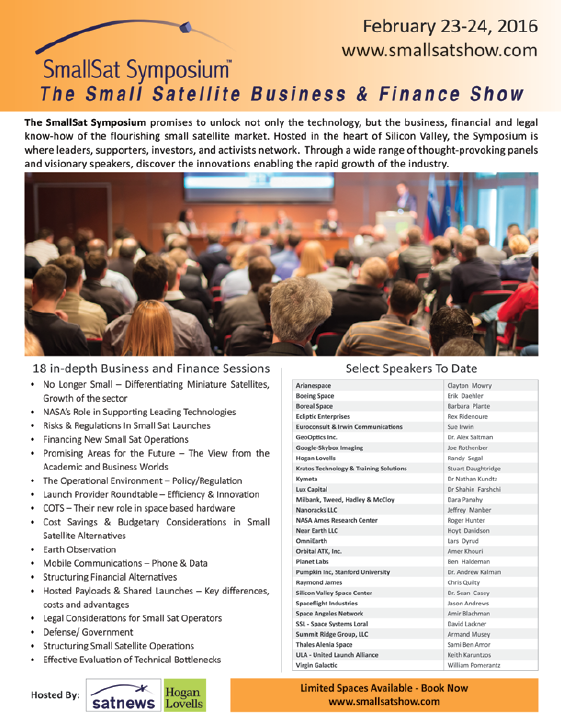CPI’s LIFEEXTENDER is a dynamic technology that is currently the most effective method available to increase the life of traveling wave tubes (TWTs) used in satellite uplink amplifiers.
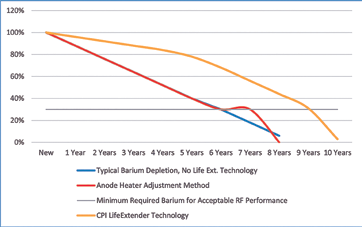
Figure 1. Typical barium depletion curves for TWTs using LIFEEXTENDER technology, the anode voltage adjustment method, with no TWT life extending technology.
This patented technology is the only method in which the life of the TWT is actually extended by preserving the active coating on the cathode surface.
Every TWT reaches end-of-life when its cathode barium reserve is exhausted. Barium is an element that, when heated within the TWT, helps provide the necessary electrons for the radio frequency (RF) amplification process. However, with CPI’s LIFEEXTENDER, the cathode heater voltage is now adjusted over time to optimize the rate of barium depletion, thereby maximizing the life of the cathode and resulting in up to 50 percent longer TWT life.
Until now, technologies focusing on extending tube life have never concentrated on preserving barium, the active element on the cathode. However with LIFEEXTENDER, the cathode heater voltage is adjusted over time to minimize the rate of barium depletion, thereby maximizing the life of the cathode and resulting in up to 50 percent longer TWT life.
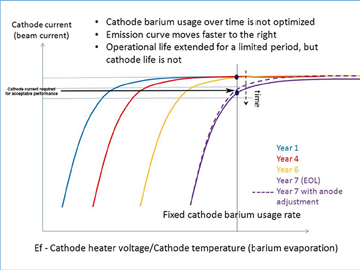
Figure 2. Emission Curves and Anode Voltage Adjustment Effects.
LIFEEXTENDER is a much more effective method of extending TWT life than the most common alternative, which is to adjust the TWT anode voltage. With the anode voltage adjustment method, the cathode heater voltage is fixed at the time of manufacture and does not change over time, just as in amplifiers with no life extending technology. Instead, the anode voltage is ramped up near the end of TWT life to compensate for the loss of gain and beam current in the TWT that has naturally occurred over time. Under this method, depletion of the cathode’s barium occurs at the same rate as it does in a TWT that has no technology for extending TWT life. While the anode voltage adjustment makes use of barium that would otherwise go unused at the end of the TWT’s life, thereby maintaining TWT performance for a short period of time, LIFEEXTENDER optimizes barium evaporation over the entire life of the TWT, extending typical tube life well past the lifetimes of other HPA components, and reducing the probability for needing even one replacement TWT over the typical life of the amplifier.
Figure 1 shows a graph depicting the typical reduction of barium in a TWT over time. Figure 2 shows how the cathode emission curve changes over time, and also reveals how anode voltage adjustment affects the emission curve. Each curve in the diagram represents a snapshot in time of the same emission curve for a single TWT.
In years one, four and six, with the cathode heater voltage set at a constant temperature, the TWT has no trouble maintaining the required beam current. By year seven, with less barium available to help create enough electrons, the minimum required beam current can no longer be maintained. Adjusting the anode voltage upward creates a stronger attraction for the electrons, which (for a short time) staves off the inevitable end of the TWT.
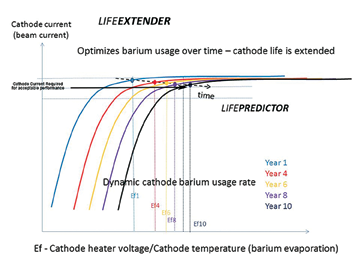
Figure 3. Emission Curves and LIFEEXTENDER Effects.
Figure 3 shows how maintaining a cooler cathode from the beginning of TWT life can save barium, while still provide enough available electrons to sustain the required beam current. Increasing the heater voltage setting higher than the optimal point (i.e., the inflection point shown in Figure 3 will do little to improve the beam current. Conversely, lowering the heater voltage setting from the optimal point will not provide a sufficient temperature to produce enough available electrons.
As the TWT ages, it becomes necessary to gradually boost the heater voltage (i.e., raise the cathode temperature) over time to maintain the beam flow. Without LIFEEXTENDER, unnecessary amounts of barium are wasted at the beginning of TWT life, simply because the cathode temperature is higher than it needs to be for the TWT to function properly. With LIFEEXTENDER, wasteful use of barium at the beginning of the TWT’s life does not occur.
Virtually all SATCOM TWT manufacturers acknowledge that CPI’s method of dynamically adjusting the heater voltage over time will lengthen a TWT’s cathode life.
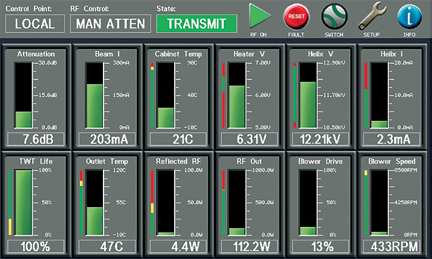
Figure 4. LIFEEXTENDER/LIFEPREDICTOR GUI screen. The remaining TWT life is shown in the lower left hand box.
While this is new technology for satellite communications applications, a similar method has successfully been in use for broadcast transmitter tubes for many years, making LIFEEXTENDER at once both innovative and very low risk.
An additional benefit of LIFEEXTENDER technology is an included feature called LIFEPREDICTOR, which monitors the evolution of the inflection point of the cathode emission curve over time. During the life of a TWT, the inflection point in the cathode emission curve moves as does the heater voltage level. By analyzing the heater voltage setting and how much additional voltage adjustment capacity is available, a prediction of remaining TWT life is made.
This LIFEPREDICTOR information is readily available through the HPA’s M&C and/or GUI interfaces, allowing the user to better plan for maintenance.
www.cpii.com/satcom


